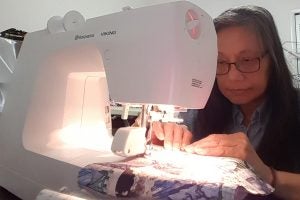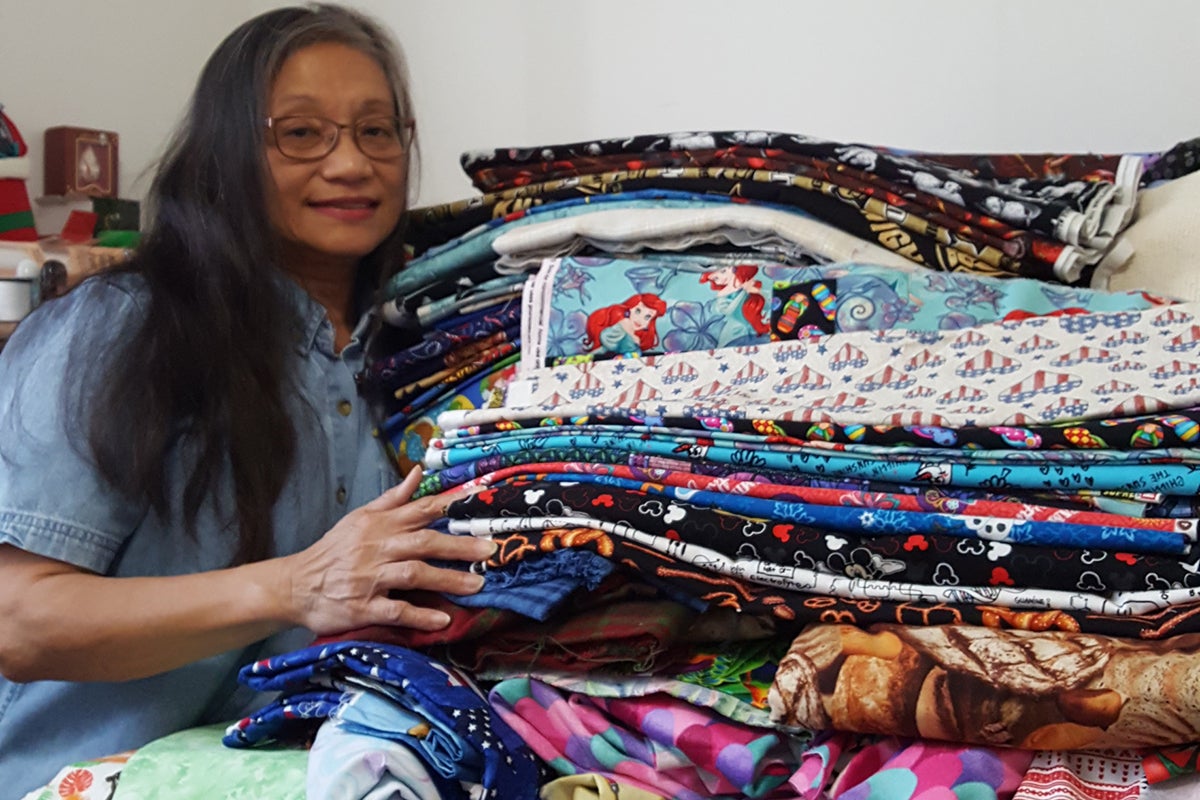Much like civilian efforts to support the nation during times of war, people around the country are doing their part to help stop the spread of the coronavirus.
One of the latest examples is sewing homemade face masks for first responders and medical personnel who are having trouble getting them because they are in short supply.
Chris Dantes, a grants specialist in the University of Central Florida’s Office of Research, is one of the people who has taken up the effort.
“I was reading about medical health professionals who are running out of protection for themselves, and that touched me because they are sacrificing their own health by taking care of others in need,” Dantes says. “They need to protect themselves.”
Dantes, who has been sewing for over 15 years and has worked at UCF for 26 years, has a personal connection to the medical profession.
“My mom is a retired nurse, but she never encountered anything like this,” she says. “I have family in the medical profession as well.”
The face masks she sews are 100 percent cotton and come from her ample stash of fabric.

And while the homemade masks are not adequate protection for healthcare providers, they may help bridge the gap until the more effective masks for blocking coronavirus particles, N95 respirators and surgical masks, become available again, says Annette Bourgault, an assistant professor in UCF’s College of Nursing.
“Like the U.S. Centers for Disease Control and Prevention recommends, only use homemade masks if commercially manufactured masks are unavailable,” Bourgault says. “Healthcare providers should work with their administration to obtain commercially manufactured masks.”
“There is no comparison in the effectiveness of cotton masks to N95 masks,” she says. “N95 masks are the gold standard for airborne precautions, and a properly fitted N95 mask may block 95 to 99 percent of aerosol particles.”
For masks sewn at home, Bourgault says studies have shown that transmission of particles is affected by the type of material and the seal of the mask around the mouth and nose.
“Before you start sewing, make sure that you have evidence to back up your choice of fabric and mask pattern,” she says.
Nevertheless, Bourgault says homemade masks may help alleviate anxiety for healthcare providers and give mask makers a sense of purpose in the midst of the coronavirus pandemic.
That need to help is one of the driving factors for Dantes.
“At times like these, I like to help,” Dantes says. “And if we’re running out of something, then I want to at least be able to contribute a little bit.”
So far, Dantes has made 15 masks. She says she has an ample supply of fabric; however, the one thing she does not have plenty of is more of the elastic that forms the band that holds the mask in place.
“The quarter-inch elastic is out of stock everywhere,” Dantes says. “I think every person who knows how to sew is probably making these.”
However, Dantes says she may make more with straps that tie instead of using elastic.
Dantes plans to donate the masks to medical professionals through her network of friends. She has already given five to a friend who is a traveling nurse and 10 to a local healthcare facility.
“I have seen masks selling for $5 on social media,” Dantes says. “I understand people have a need, but for me personally, I plan not to charge. I see a need and I want to help. We are all in this together.”




